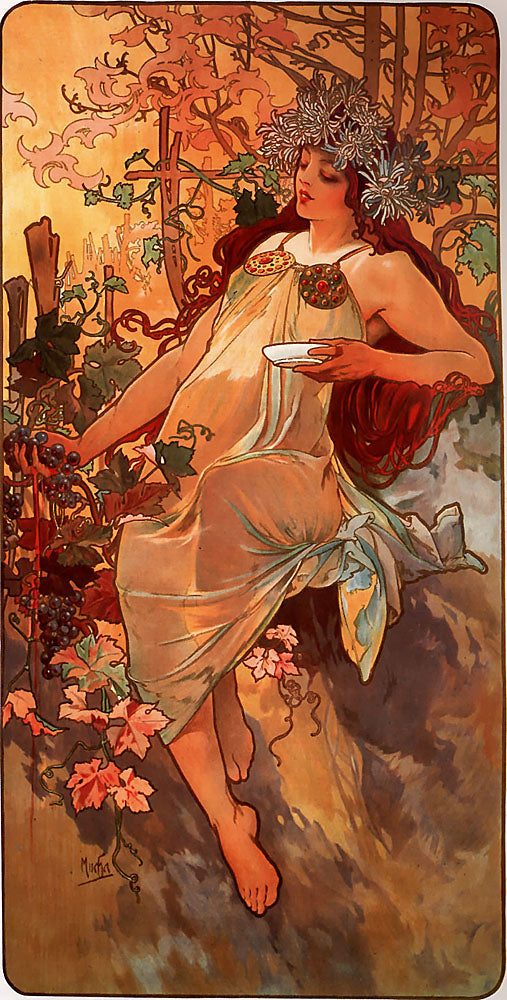
Autumn, 1896
Alphonse Mucha’s Autumn, 1896 is the third instalment in his iconic Seasons series, which revolutionised decorative art and helped define the Art Nouveau movement. In this panel, Mucha personifies the season of autumn as a confident young woman cloaked in a deep orange dress, set against a richly coloured vineyard. She sits casually on a stone bench, holding a cluster of grapes, a symbol of harvest and abundance. With her head turned to the side and a crown of vine leaves adorning her hair, the figure represents the maturity, richness, and sensuality of the fall season.
Mucha’s Autumn is characterised by warm, saturated tones—rich oranges, earthy browns, and golden highlights—which create a strong contrast with the pale skin of the central figure. The background is adorned with grapevines and trees, rendered in the artist’s signature style: curvilinear lines and stylized natural elements. The surrounding vegetation creates a rhythmic composition that envelops the figure, emphasizing her connection with the earth and its seasonal bounty. The scene is framed by an elegant arch with decorative motifs, reinforcing the ornamental elegance central to Mucha’s Art Nouveau vision.
Alphonse Mucha’s Autumn, 1896 blends allegory with design, capturing not just the appearance of fall but its deeper emotional and symbolic resonance. Autumn is portrayed here not as a time of decline, but as a season of fulfillment, sensuality, and generosity. The woman’s gaze is self-assured, her posture relaxed, as if she is savoring the fruits of summer’s labor. Mucha’s treatment of the figure as both decorative and symbolic reflects his ability to elevate commercial art into a realm of fine art and philosophical reflection.
Today, Autumn, 1896 is admired for its technical finesse, symbolic richness, and lasting influence on modern visual culture. Alongside the other panels in the Seasons series—Spring, Summer, and Winter—it stands as a masterpiece of fin-de-siècle design and an enduring tribute to the beauty of seasonal change. It remains one of Mucha’s most celebrated works, frequently exhibited and reproduced for its timeless aesthetic appeal.
